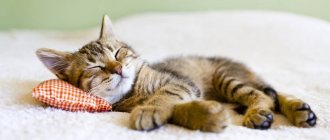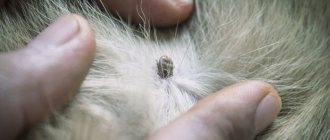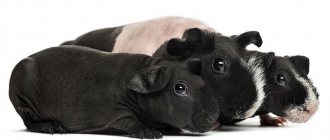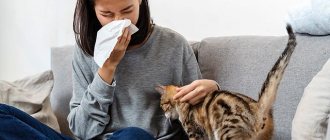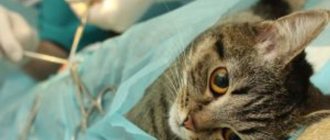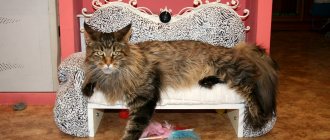Where to begin?
First, you should understand that a pet in the house is a full-fledged member of the family. If you decide to bring a kitten into your apartment, accept it as an equal member of the household. His opinion will have to be taken into account, so it is in your best interests to establish a trusting relationship with him. How to do it? Showing respect, of course!
To those who have not lived next to a cat, such advice will seem like an exaggeration. However, those who have been familiar with purrs for a long time know: a cat is a person. And this person will certainly show her temperament in the first days of your acquaintance with her.
Nutrition
The first thing new cat owners ask is: what to feed the cat? It all depends on how much free time the owner has. Depending on how busy the “chef” is, there are two options for the cat menu:
- Ready-made feed;
- Natural food.
Natural menu
If the owner prefers to cook food at home, then it is advisable to find a few minutes to prepare lunch for the pet. Because natural food is the ideal diet for a cat.
Feed your cat well
However, besides its usefulness, there are several disadvantages:
- Pickiness of a cat. Domestic cats often don't know what they want, so it may take you some time to get to know your pet's tastes.
- The high cost of natural products. As you know, cats are predators by nature. And predators need meat. Not every owner is ready to include an extra portion of meat products in their daily expenses.
- The need for vitaminization. If a cat eats natural food, it also needs vitamins. It turns out that Murka also needs to be stuffed with vegetables, which, by the way, she doesn’t want to eat.
Natural food and food from the table are not the same thing. By treating your cat with food from the table, you are harming the health of the animal.
In the wild (which is where our domestic cats come from), cats do not have the opportunity to enjoy fried, salty, smoked and sweet food. Therefore, even in apartment conditions, animals have no use for it.
Food without seasoning
If the owner decides to feed the cat natural food, it is necessary to ensure that it contains the following elements:
- Meat. The largest percentage of food in the bowl should be lean varieties of boiled meat and poultry;
- Fish should appear in a cat’s diet no more than once a week. Neutered pets do not need to be given it at all;
- Vegetables: carrots, beets, pumpkin;
- Dairy products. It is useful to treat your pet with kefir or fermented baked milk. Milk, on the contrary, should not be given;
- Once or twice a week, you can offer your cat a raw egg.
- Cereals. Porridges are also good for animals. Fiber in oatmeal, wheat and rice porridge has the best effect on digestion.
Ready-made feed
In conditions of constant employment, modern owners are increasingly choosing ready-made food as the main diet for their pet. It's convenient, profitable and fast. But what requirements should there be for a cat’s menu?
There are three types of ready-made food:
- Economy class;
- Premium;
- Super premium.
Economy class food is characterized by its low cost and availability. They can be found in any pet store.
The composition of such a product leaves much to be desired: no nutrients, no beneficial vitamins. But there are too many fillers and allergens. If you plan to feed your cat ready-made food, it is better to choose a higher quality option.
Economy food is only suitable for a one-time treat for a homeless cat, but not for a permanent diet.
Examples of economy class food: “Kitiket”, “Friskes”, “Whiskas”.
Economy class comes with premium food. Such foods contain a higher percentage of meat ingredients, however, there is still a high content of fillers that do not provide any benefit. This diet is more suitable as a main menu. But vitamin and mineral supplements are still necessary, since such feeds are not balanced.
Examples of premium lines: Sheba, Purina Van, Prevital. The cost of such manufacturers is average.
The best option for a domestic cat's diet is super-premium food. Such lines are balanced, so there is no need to give your pet vitamin and mineral supplements. It is also worth noting that super-premium food contains a large percentage of meat, which is optimal for cats.
The cat loves it when there is meat in the bowl
The disadvantage of this food can be considered its high cost.
Water
Place a cup of water near the bowl of food. For drinking, it is best to use regular clean “ash-two-o”. It is not necessary to filter your cat's water.
There are special requirements for a drinking cup. To prevent the bowl from absorbing foreign odors, it is best to use ceramics. It should be wide so that the cat's whiskers do not bend when drinking.
All cats are predators at heart, so they drink from puddles.
Metal bowls are also good, but cats do not always perceive such dishes adequately: the reflection on the shiny bottom can distract the cat from drinking.
Restroom
The next important point: the cat's toilet. There are also some requirements for the restroom. In the wild, a cat will not do its business where ill-wishers might find it. The same applies to the home toilet:
1. The tray should be in a quiet place . Where children are running around or human feet are trampling, the cat will not sit down. You can try to “change” her views, but the result will most likely be a pile in the wrong but calm place.
2. The tray should be comfortable . The cat must fit entirely into its “box”, and it needs space to rake in the result. Make sure the tray is spacious and has a sufficient edge.
3. The filler should not have a strong smell. Cats have a keen sense of smell, so the “smelly” litter can cause the cat to run under the sofa. It is also worth noting that some components of the filler often cause allergies in cats, so prefer natural types of raw materials.
4. Cleaning should be done as soon as possible after using the restroom. Cats love cleanliness, so they won’t go to a dirty litter tray.
5. Do not use aggressive chemicals for disinfection. Even though such products clean well, they completely discourage your pet from going to the strong-smelling toilet.
Some owners have a problem with how to teach a kitten to go to the toilet. If you take a little fool from the street, be prepared for the fact that you will still have to remove several unexpected piles. However, you should not give up on foundlings. You won't find a better friend than a rescued cat.
And you can easily train him to the tray:
- When the kitten starts to thrash around, put him in the litter box. Do this several times in a row if necessary;
- Protect the soil in your home pots from visits from the kitten, at least temporarily;
- Use special tools to show kids where to go to the toilet. Such sprays can be purchased at veterinary pharmacies and stores.
Cat scratching post
A cat needs a durable scratching post, at least 70-90 cm high, that will allow it to fully stretch when scratching. The scratching post must be sufficiently stable and well secured so that it does not wobble during use. The scratching post should be covered with a rough material such as burlap or tree bark. To train your cat to use a scratching post, rub your hands over the scratching surface and then gently rub your kitten's paws over the surface. When your cat starts scratching furniture or rugs, gently say “no” and lure her to the scratching post. Praise your cat for using the scratching post. You can sprinkle catnip or add 1-2 drops of valerian, but not much and not often, 1-2 times a month. These scents will make your cat interested in the scratching post.
Bathing
Cats don't swim, but they get dirty. Therefore, they need to be washed regularly. The frequency of water procedures depends on the lifestyle the pet leads.
Those cats that visit the street are advised to bathe at least once every two weeks. Even the cleanest cats visit garbage dumps, so don’t be fooled by your pet’s sparkling eyes and wash him regularly.
Truly domestic cats can be bathed less often. But still necessary. Short-haired purrs can be bathed once every three to four months. Long-haired cats need more frequent water treatments.
The frequency of showering is determined over time and individually for each pet.
There are situations when you need to buy a cat outside of the schedule:
- Approaching mating;
- Visit the exhibition;
- Shedding;
- Removal of fleas and other parasites.
You need to wash your cat with a special shampoo. This product will not dry out the animal’s skin. If you don't have cat shampoo on hand, you can use baby shampoo. But such a “replacement” should not be used often.
An unpleasant necessity
If you are going to bathe a long-haired cat, you must first brush it. This will save the owner from having to untangle the tangles after washing.
Ears
Cats' ears need to be cleaned regularly. Murki are designed in such a way that they cannot take care of their ear canals on their own. Therefore, such a mission falls on the shoulders of the owners.
Once every three weeks it is necessary to clean the inside of the ear. This is done like this:
- A cotton swab is moistened with Vaseline;
- Then it must be inserted into the ear canal no further than 1 centimeter;
- Carefully clean the ear of accumulated wax;
- Next, you can treat the cleaned ear with hydrogen peroxide, also moistening a cotton swab in it.
The ears of a cat walking outside are more at risk. Therefore, they need to be inspected every day and cleaned more often than is the case with pet cats.
Eye care
A healthy animal does not have discharge from the eyes. In extreme cases, small transparent accumulations in the corners are possible. The owners should be alerted to copious brown discharge, as well as red, inflamed eyes.
Such symptoms in most cases indicate the development of an inflammatory process and require immediate veterinary care. Before visiting the veterinary clinic, you are allowed to treat your eyes with cotton wool soaked in a chamomile solution. The same procedure can be performed for preventive purposes.
Wool
Some breeds require more attention. These include long-haired cats. Such pets need to be combed.
This is necessary for several reasons:
- Brushing helps reduce shedding;
- Skin massage allows you to keep your cat's coat and dermis in the best possible condition;
- The amount of fur that the cat sheds on furniture is reduced.
For individuals with undercoat, there is a special brush that makes combing convenient and more effective - a furminator. Specially designed cheek teeth allow you to remove dead hairs without damaging living hairs.
Using the Furminator
For breeds with short hair or those without an undercoat, a regular brush or a rubber glove with “bristles”, which can be purchased at a pet store, will do.
It is enough to comb your pet once a week in normal condition and twice during periods of shedding. An individual schedule is drawn up for each cat separately.
Claws
Claws are the reason why many people refuse to own cats. And in vain. Today there are methods to help avoid scratched furniture and damaged wallpaper:
- Nail trimming is the easiest and cheapest method. Trim its claws once every two weeks and the cat will not feel the need to sharpen them on your sofa;
- Give your pet a scratching post. No less effective method. Murka will visit the area designated for manicure sessions and will stay away from the carpet and upholstered furniture;
- Anti-scratch. A new-fashioned device consists of plastic or silicone attachments for claws. A cat “dressed” in such caps will not spoil the wallpaper and corners.
Anti-scratch
Feeding cats and kittens
An adult cat should be fed one large or two small meals every day. Read more about cat food in our article.
Kittens from 6 to 12 weeks of age need to be fed four times a day. Kittens from 3 to 6 months are fed three times a day. You can feed in fixed portions, discarding the remaining canned food after 30 minutes, or feed dry food.
Feed your cat high-quality kitten or cat food from a quality manufacturer 2-3 times a day. Read more about food for kittens in our article.
Kittens can be fed baby food for a short time (unless they will eat kitten food) softened in warm water. Use turkey or chicken baby food designed for babies six months and older. Gradually mix with cat food.
Cow's milk is not necessary and can cause diarrhea in kittens and cats.
Always provide fresh, clean water. Wash and refill water bowls daily.
Walks
Some owners prefer to keep their pets at home, not allowing the cats to get acquainted with the outside world. However, it has long been known that walking strengthens the immune system, so to the question “should I walk my cat” there is only one answer: yes.
Before you start walking your pet, you need to protect it:
- Only vaccinated animals are allowed for walking;
- During walks, the cat must wear an anti-parasitic collar;
- There is no need to walk your cat in damp and cold weather;
- After visiting the yard, the cat needs to wash its paws and inspect the animal for ticks.
If the walk involves wearing a special harness, then the cat should get used to such an accessory at home. You can walk your pet only when it moves freely around the apartment in its equipment, without trying to take it off.
Walk
Choose quiet and clean lawns for walks. It is unlikely that a cat will benefit from visiting a paved area of the yard or meeting dogs.
You should not let your cat near unfamiliar animals. Stray animals are often carriers of diseases, even if they appear healthy.
Unsterilized pets should not be left unattended. Not only will he try to procreate, but he may also pick up viruses that are inappropriate for a domestic cat.
Teeth
If a cat eats solid industrial food, then teeth cleaning occurs naturally and mechanically.
For those animals that eat mostly soft food or natural food, it is recommended to brush their teeth regularly. To do this procedure correctly, you need a soft toothbrush and veterinary toothpaste.
First, the animal is given a taste of the paste, the next time a finger is gently rubbed along the gums, and only then a brush is used. You should not try to clean the entire mouth for the first time; it is important to let the cat get used to this procedure.
When brushing your teeth, the brush is held parallel to the gum. The teeth are processed starting from the far ones, towards the front incisors. And the entire mouth is processed in the same direction.
